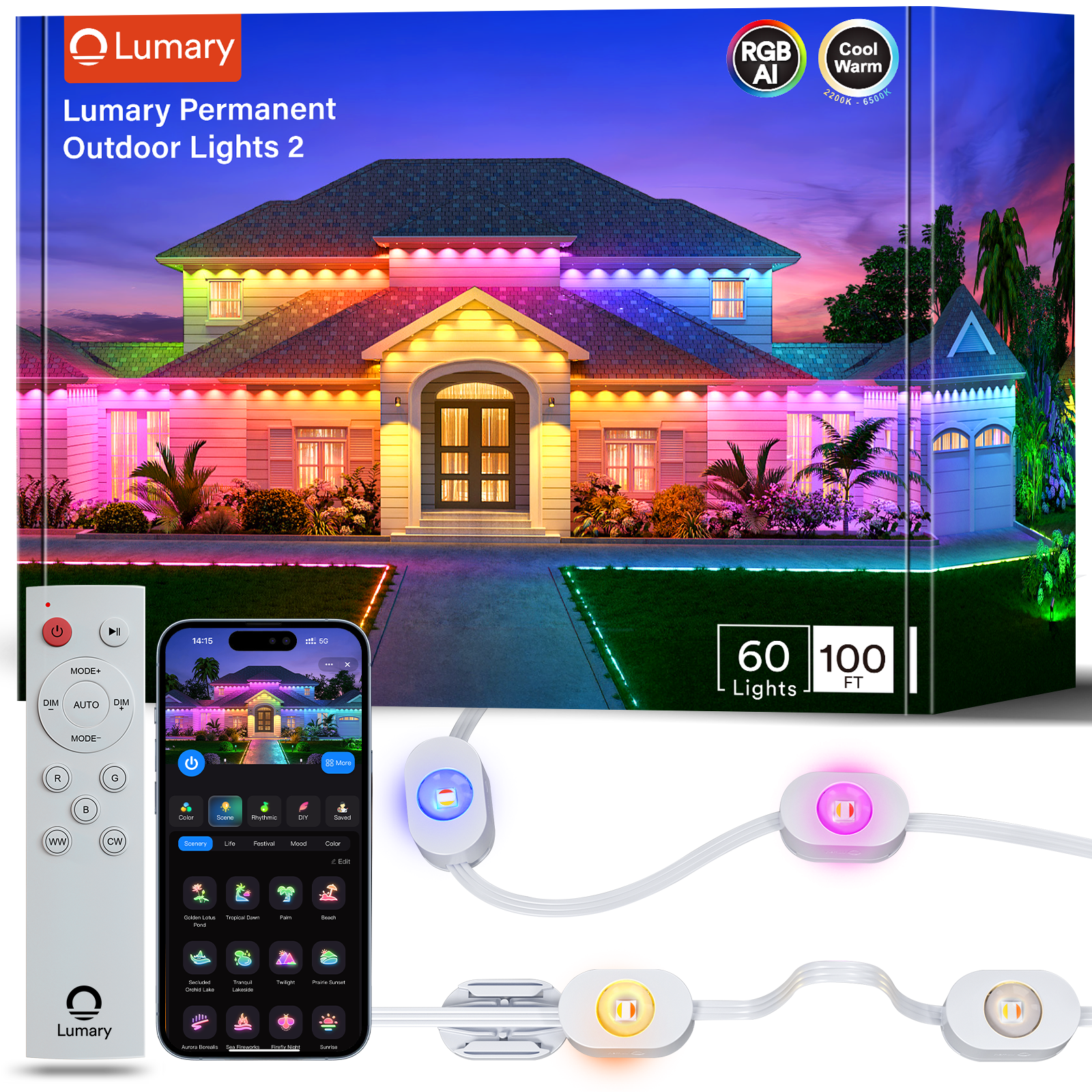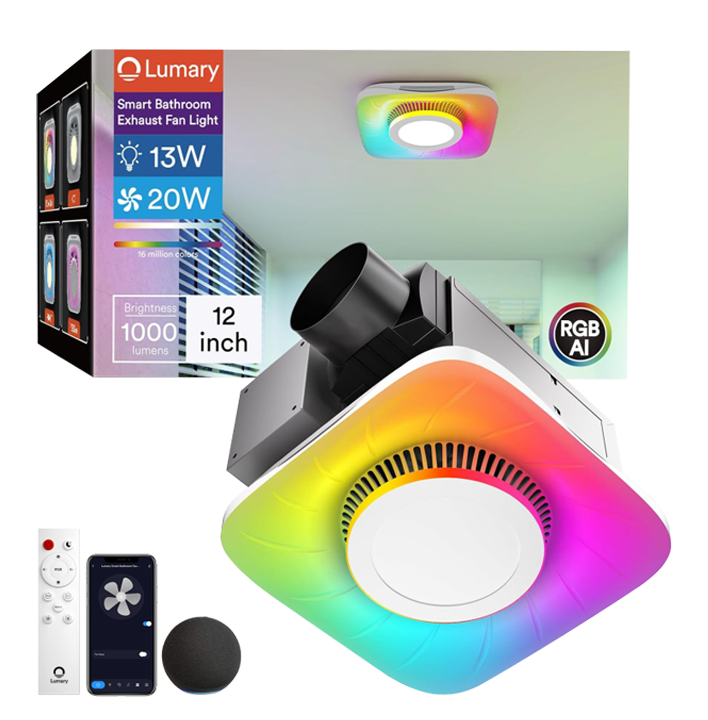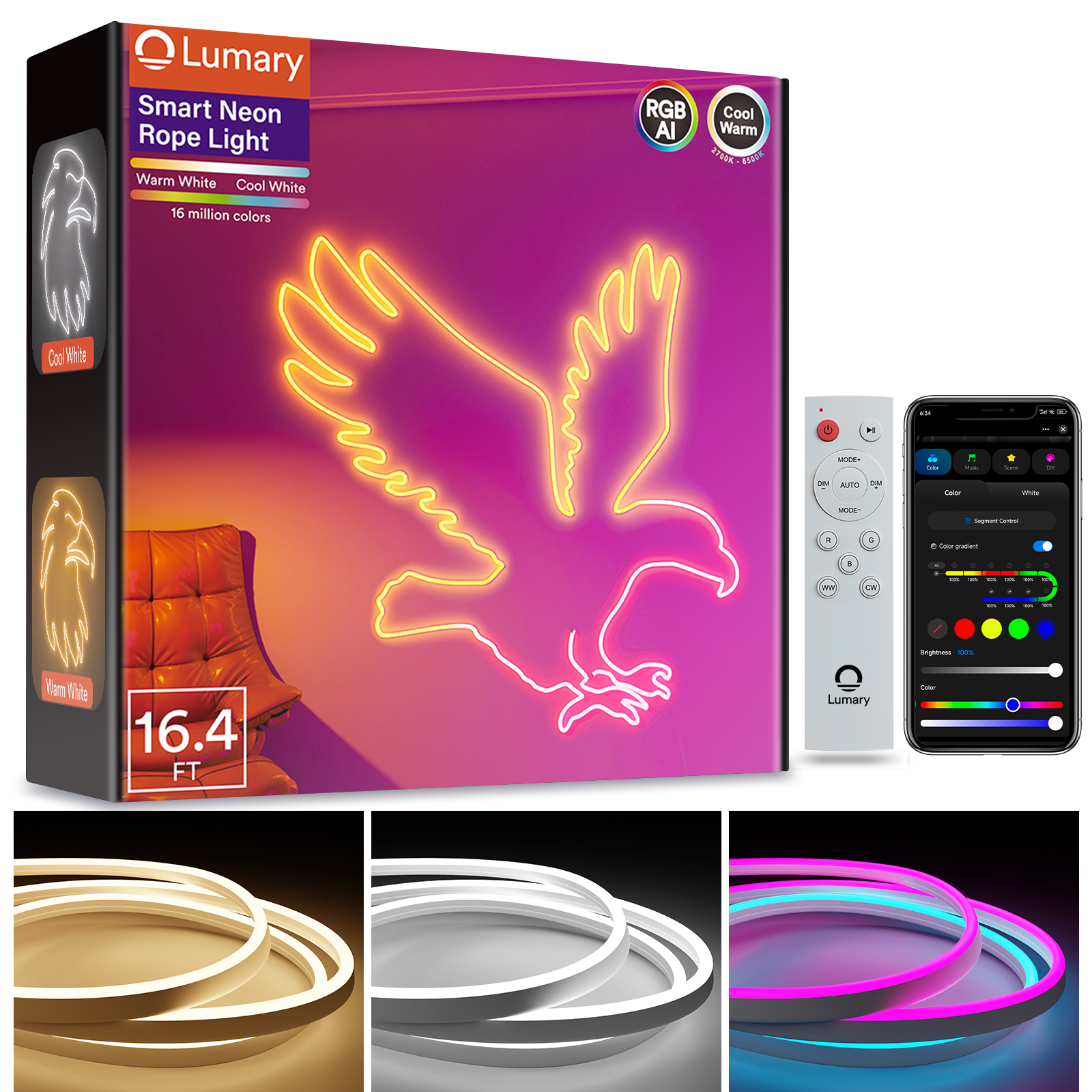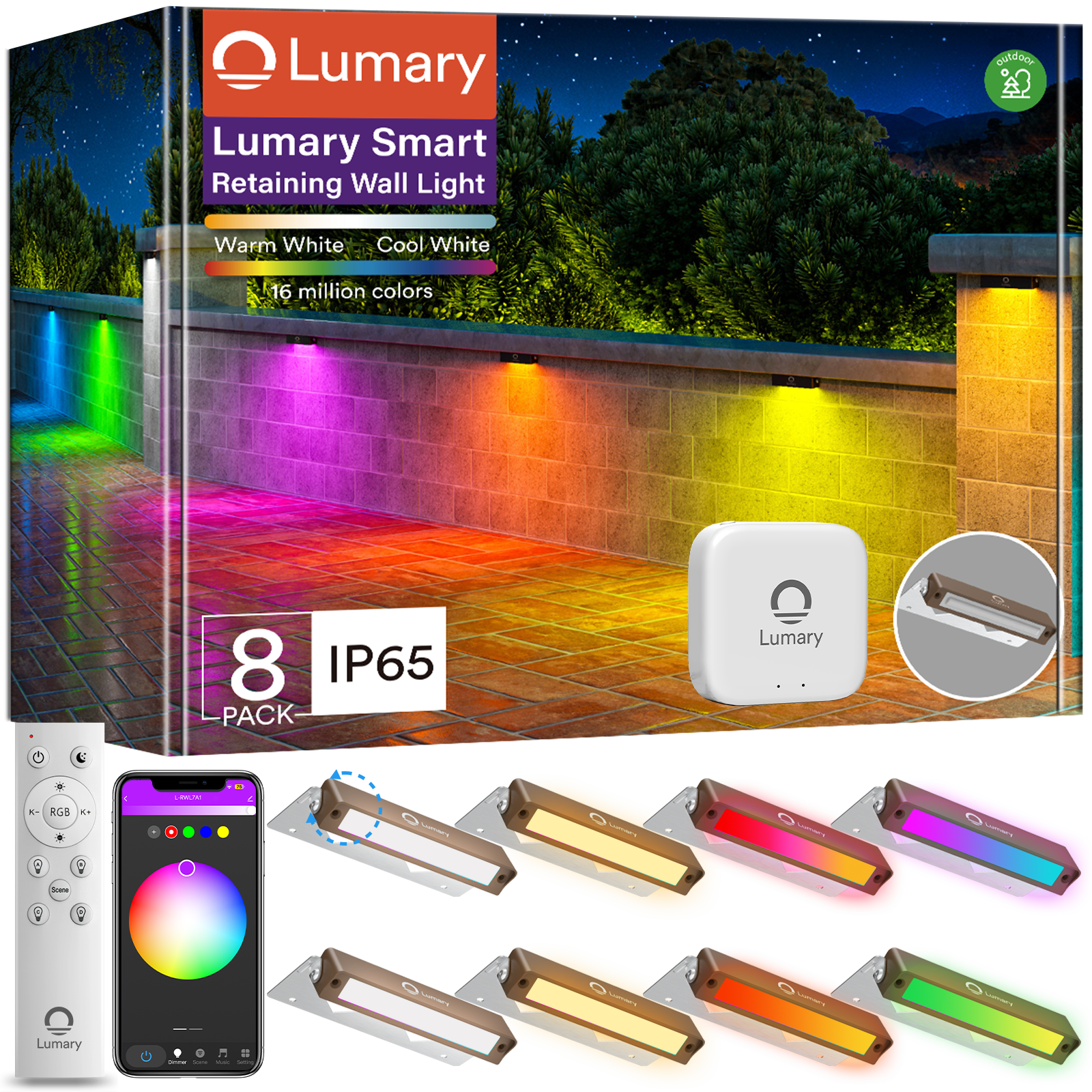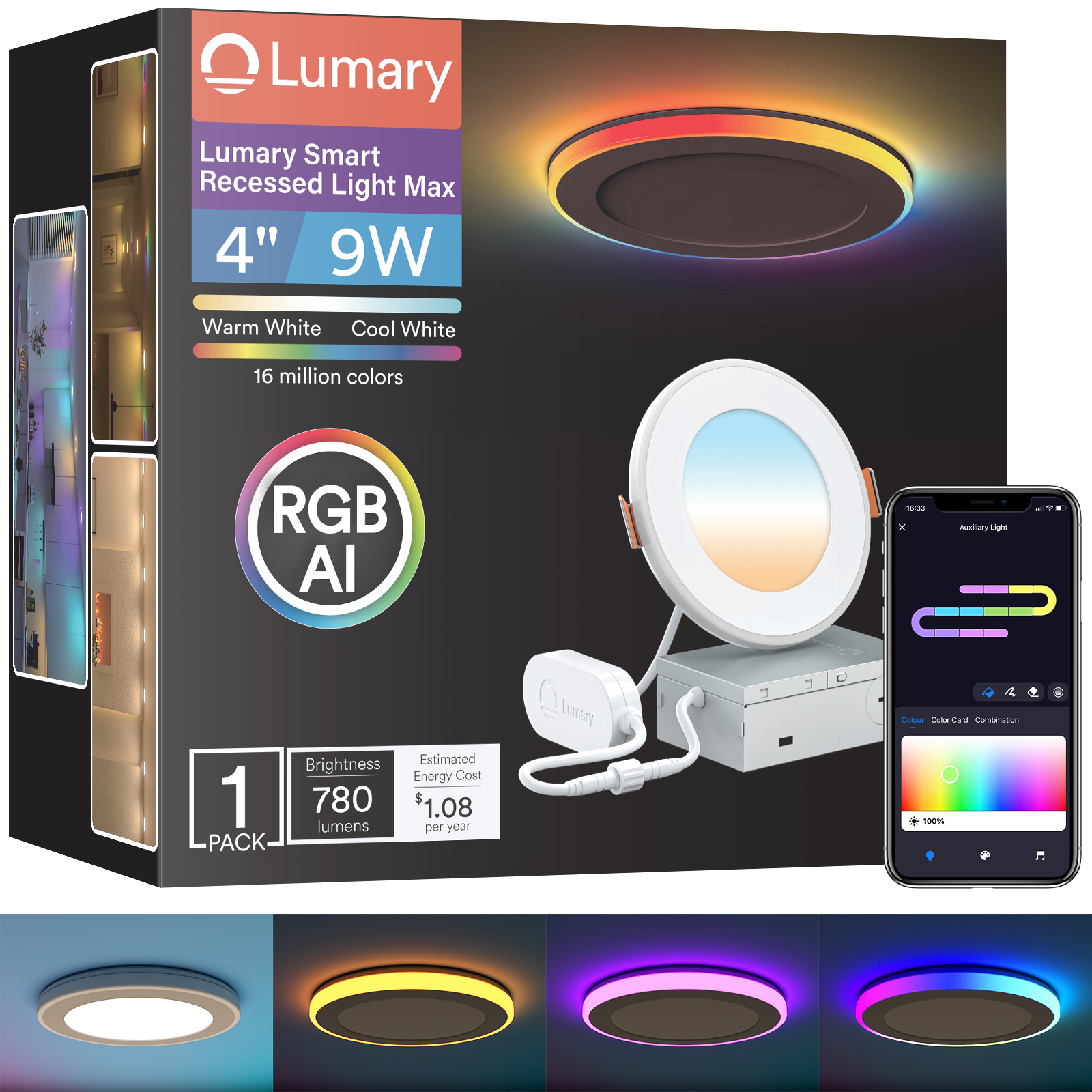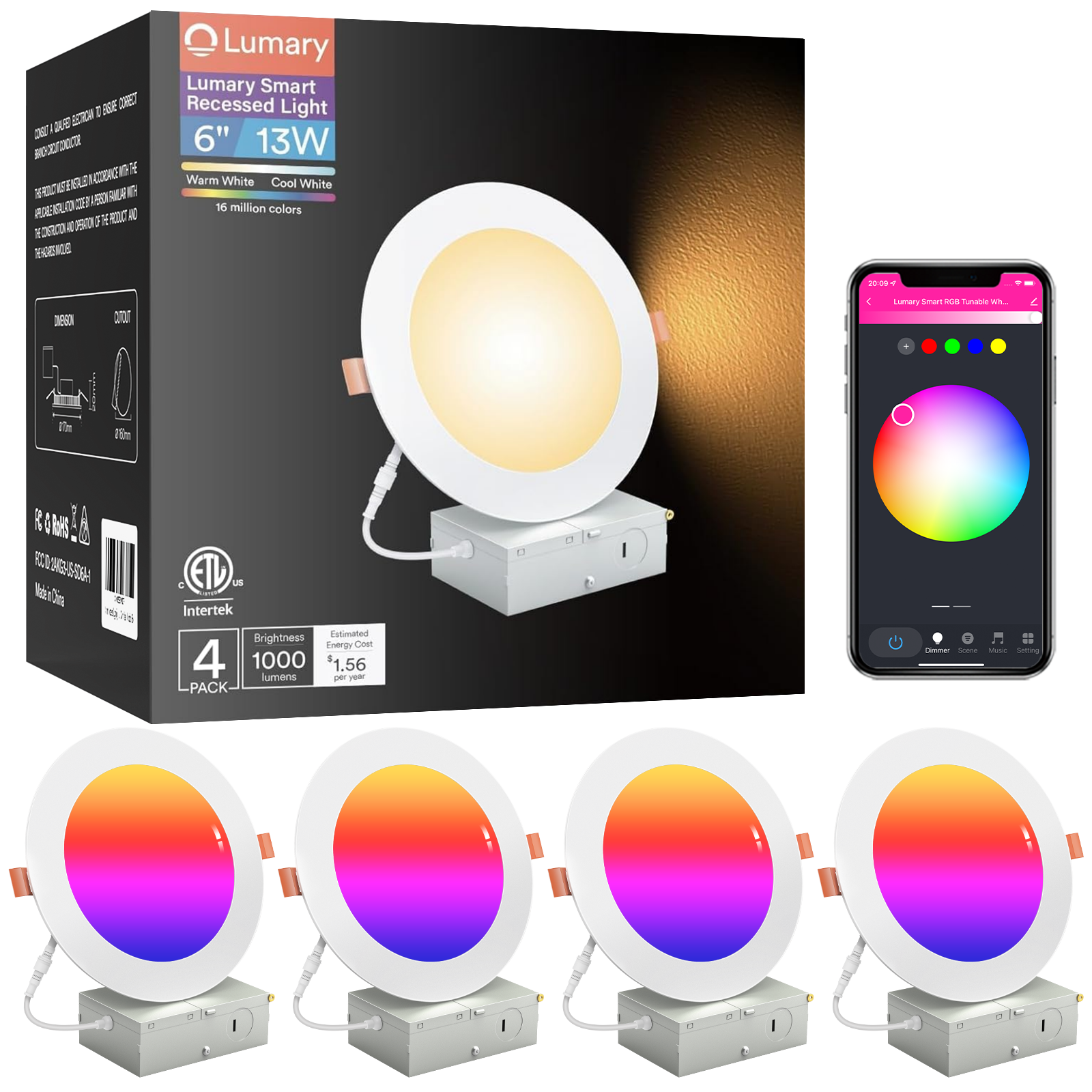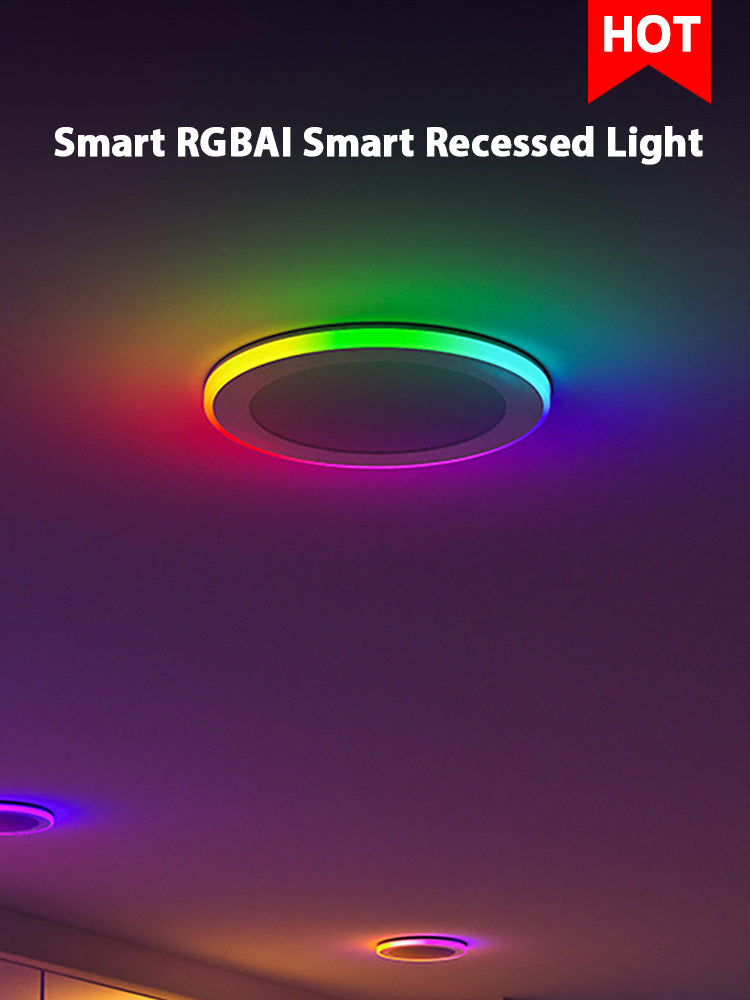You may ask if you need a professional to put in permanent outdoor lights. If you know basic electrical work and want to do permanent holiday lighting yourself, you can try it. Safety is very important, so make sure you feel safe before you begin. Some products, like Lumary Permanent Outdoor Lights Max, have simple features that help DIYers put in permanent outdoor lights with less worry.
Tip: Always check your setup for safety before you turn on the lights.
Key Takeaways
-
Safety is very important when you put in outdoor lights. Always use GFCI outlets and weatherproof fixtures. This helps stop electrical dangers.
-
Plan your lighting setup with care. Draw your yard on paper. Mark where you want to put the lights. Make sure you can reach them easily for fixing.
-
You can install lights yourself if you know basic electrical work. Doing it yourself saves money. You can pick your own style. But it takes time, so be ready for that.
-
Getting a professional can keep things safe and follow local rules. Experts can do hard jobs and give you warranties.
-
Pick strong lights like Lumary Permanent Outdoor Lights Max. They last long and are weatherproof. They are made to be easy to put in.
Safety Tips for Installing Permanent Outdoor Lights
When you start putting up your lights, always think about safety first. These tips will help you do the job right and keep your house safe.
Electrical Safety Precautions
You should follow these steps to stay safe:
-
Use GFCI outlets for all outdoor lights. These outlets help stop shocks, especially if it is wet outside.
-
Choose fixtures made for outdoor use. Look for products with an IP65 or IP67 rating.
-
Make sure all fixtures are weatherproof and attached tightly.
-
Follow the National Electrical Code and your local rules to keep things safe and legal.
If you use lights like Lumary Permanent Outdoor Lights Max, you get extra safety. These lights have an IP67 waterproof rating and UV-resistant materials. They can handle rain, snow, and sun without problems.
Weatherproofing and Outdoor Hazards
Weatherproofing helps your lights last longer and stay safe. Here’s why it is important:
-
It keeps your lights safe from water, rust, and hot or cold weather.
-
You save money on repairs because your lights last longer.
-
Your lights stay bright and steady even when the weather changes.
|
Feature |
Description |
Impact on Durability |
|---|---|---|
|
IP67 |
Keeps out dust and can be underwater for a short time |
Works in all kinds of weather |
|
UV-resistant materials |
Stops the sun from hurting or fading your lights |
Keeps lights looking and working well for a long time |
Using GFCI Outlets
GFCI outlets are very important for outdoor lights. They turn off power if there is a problem, so you do not get shocked. Always check your outlets before you start putting up lights. If you are not sure, ask a professional for help.
Outdoor lights help emergency workers find your house fast if there is an emergency, so using good safety steps keeps you and your family safe.
By following these safety tips, you make your lights safer and more reliable. You also help your lights last longer and work better in every season.
Planning Your Outdoor Lighting Installation
Layout and Power Supply Considerations
Before you start, think about what you want your outdoor lights to do. Do you want to make your home safer, highlight your garden, or create a festive mood? When you know your goals, you can pick the right lights and decide where they should go. Make a simple sketch of your yard or patio. Mark where you want each light and where your power sources are. Place your transformer in a spot that stays dry and is easy to reach. Plan your wire runs so they connect your lights and transformer without crossing busy walkways.
Tip: Always plan for easy access to your lights. You’ll thank yourself when it’s time to clean or change a bulb!
Distance and Placement for Optimal Illumination
Getting the placement right makes a big difference. Keep each light about 3-8cm away from the wall for the best effect. This distance helps you avoid harsh shadows and gives you smooth, even lighting. Space your lights so they don’t overlap too much, but also don’t leave dark spots. If you use Lumary Permanent Outdoor Lights Max, you can adjust each light’s color and brightness to fit your needs. Think about how the lights will look from different angles, and make sure you can reach them for maintenance.
Securing Lights and Routing Wires
You want your lights to stay put and your wires to stay safe. Use clips or screws to secure each light. Clean the surface before you stick or screw anything down—dust and dirt can make lights fall off. Route wires along edges or under eaves, and avoid high-traffic areas where people might trip. Bury cables if you can, using direct burial wires for extra protection. Regularly check for frayed or exposed wires. Use weatherproof connectors to keep water out. Here’s a quick table to help you remember:
|
Best Practice |
Why It Matters |
|---|---|
|
Use weatherproof connectors |
Stops water from causing electrical problems |
|
Keeps your system safe and working |
|
|
Properly bury cables |
Protects wires from damage and keeps your yard neat |
If you plan ahead and follow these steps, you’ll have outdoor lights that look great and last for years.
DIY vs. Professional Installation
You have two main ways to put in permanent outdoor lights. You can do it yourself, or you can hire a professional. Each choice has good and bad points. You should know these things before you pick.
Pros and Cons of DIY Installing
If you like doing projects, you might enjoy installing your own lights. You can choose your own style and save money. You also learn new things. Some lights, like Lumary permanent outdoor lights, are made for easy DIY use. They come with clips and screws, so you can put them up without special tools. You do not need a professional to help. These lights have a waterproof rating (IP67) and strong aluminum housing. You can use them in wet or salty places without worry.
Think about these things before you start:
-
You must plan your project. Measure your space, draw a simple map, and check your power.
-
DIY takes time. You may spend a whole weekend or more on this job.
-
You need to know some basic electrical work and have the right tools.
-
If you do not plan well, your lights may look uneven or be in the wrong place.
-
Too many lights can make your yard too bright. Not enough lights leave dark spots.
-
Bad wiring can make your lights stop working early.
Here is a table with common DIY problems and how to fix them:
|
Common Issue |
Solution |
|---|---|
|
Insect or animal damage |
Use low-heat LEDs, put hot pepper spray, or bury wires. |
|
Worn out parts |
Change old sockets or replace all bulbs at once. |
|
Failing connectors |
Look for frayed wires and call a pro if you need help. |
|
Moisture intrusion |
Make sure seals are tight and use outdoor-rated fixtures. |
Lumary permanent outdoor lights help you avoid many problems. They are easy to put up, weatherproof, and last a long time.
Benefits of Professional Installation
Hiring a professional saves you time and hard work. Experts know how to make your lights look their best. They use strong fixtures and keep everything safe. Professionals finish the job fast and handle tricky wiring.
Here is why you might want a pro:
-
Professionals know where to put lights for the best look.
-
They use the best materials that last longer.
-
They install lights safely and lower risks.
-
They follow local rules and codes.
-
They help with hard designs, many zones, or smart home setups.
-
They make your home safer by lighting paths and driveways.
If your yard is hard to work in or you want smart home lights, a pro can help. They make sure your lights are safe and look nice.
Cost and Warranty Considerations
Cost is important when you pick how to install your lights. Doing it yourself costs less at first. For example, putting in ten lights yourself might cost about $850. A professional might charge $3,000 to $3,500, but you get expert help and better materials.
Here is a table to compare:
|
Installation Type |
Cost Range |
Pros |
Cons |
|---|---|---|---|
|
DIY (Self-Install) |
~$850 for 10 lights |
More choices, brighter lights, flexible design |
Need to know how to install, takes time, cheaper fixtures may break sooner |
|
Professional Installation |
$3000 - $3500 |
Best design, top materials, warranty and support |
Costs more, you do not get to do it yourself |
Warranty is also important. Professional jobs often come with a lifetime product warranty and support. You get help for both parts and labor, usually for one to three years. Some companies give up to ten years of warranty. DIY jobs usually do not have a warranty. If you make a mistake, you might lose any warranty from the maker.
When you put in permanent outdoor lights, think about your skills, your budget, and your time. If you want something easy and reliable, Lumary permanent outdoor lights are a good DIY choice. They are simple to install, strong, and work in many places. If your project is hard or you want no worries, hiring a professional is a good idea.
Expertise Needed for Outdoor Lighting Solutions
Electrical Knowledge Requirements
You may ask if you need special skills to install outdoor lighting solutions. If you know basic electrical work, you can do simple jobs. But working with electricity can be dangerous. Remember this:
"If you do not have experience with electricity, let a professional install your outdoor lighting."
If you want to try it yourself, learn how to turn off the power first. Use a voltage tester to check wires. Connect wires carefully and safely. You should use GFCI outlets and make sure all connections are weatherproof. Always put safety first. Do not skip steps or rush.
Tools and Troubleshooting
You need the right tools for outdoor lighting solutions. Get a screwdriver, wire stripper, drill, and voltage tester. You may also need cable clips and weatherproof connectors. If something goes wrong, check your connections. Make sure your outlets work. Sometimes, a loose wire or wet connector can make lights flicker or stop.
Here is a quick troubleshooting checklist:
-
Check every wire connection.
-
Test your GFCI outlet.
-
Look for water or dirt in connectors.
-
Change any broken bulbs or wires.
If you cannot fix the problem, ask for help. A professional can solve hard problems quickly.
Smart Home Integration
Smart outdoor lighting solutions make your home look great for any event. You can control your lights with an app, voice, or a control box. Lumary Permanent Outdoor Lights Max let you use the Lumary App, Alexa, Google Assistant, or the control box. You can change colors, set scenes, or turn lights on and off from your seat.
Here is a table that shows how each control method helps you:
|
Control Method |
Benefit |
|---|---|
|
App Control |
Lets you manage lights from anywhere |
|
Voice Commands |
Lets you control lights without using hands |
|
Control Box |
Lets you change settings quickly |
|
Scene Modes |
Lets you pick custom lighting for any event |
Many brands have smart features. You can match lights to your mood, make light shows, or sync with music. Popular options work with Alexa, Google Assistant, and other smart home systems. You get more choices and can set up your lights how you want.
If you want outdoor lighting solutions that are easy and fun, smart features help a lot.
Local Regulations and Installation Codes
When you put in permanent outdoor lights, you must follow local rules. These rules help keep your home safe. They also make sure your lights work well in your area.
Permits and Inspections
You may need a permit before you start your project. The kind of permit depends on your lighting system. Here is a simple guide:
|
Type of Lighting System |
Permit Requirement |
|---|---|
|
Plug-in low-voltage systems |
You usually do not need a permit if you use an outdoor GFCI outlet and transformer. |
|
Self-contained lights (battery/solar) |
Most small projects do not need a permit. |
|
Line-voltage lighting (120V) |
You often need a permit for this type. |
|
New electrical circuits |
You usually need a permit for new circuits. |
|
Hardwiring a transformer |
You usually need a permit for this job. |
|
Digging trenches across easements |
You usually need a permit for digging. |
Tip: Always ask your city or county office before you begin. Rules can change, so it is smart to check first.
Inspectors might come to your house to check your lights. They look at your wiring and where you put your fixtures. They also check how you connect to power. If you pass inspection, your lights are safe and legal.
Compliance with HOA and Building Codes
If you live in a neighborhood with an HOA, you must follow their rules. HOAs use CC&Rs to set rules for outdoor lighting. These rules say how bright your lights can be and what style you can use. They also say where you can put your lights.
|
Regulation Aspect |
Description |
|---|---|
|
Governing Documents |
HOAs use CC&Rs to make lighting rules. |
|
Specific Rules |
Rules may limit brightness, fixture type, and design. |
|
Enforcement |
HOAs check for light trespass and keep standards. |
|
Community Standards |
Early rules help stop problems and keep the neighborhood nice. |
Building codes are important too. You must follow electrical codes for safe wiring. Zoning rules may limit how bright or tall your lights are. Many places want you to use energy-saving lights like LEDs. Regular checks help you follow the rules and keep your lights working.
Following local rules keeps your home safe, your neighbors happy, and your lights shining bright.
Decision Guide for Installing Permanent Outdoor Lights
Skills and Comfort Checklist
Think about your skills before you start. You should feel safe and sure when working with permanent outdoor lights. Use this table to see if you are ready for a DIY job:
|
Factor |
Description |
|---|---|
|
Inspection of Components |
Can you look at wires, bulbs, and connectors for damage? |
|
Environmental Considerations |
Do you know how your lights can change the environment? |
|
Energy Efficiency |
Are you okay picking LED bulbs and smart controls to save power? |
|
Light Pollution Mitigation |
Can you set up lights to stop glare and help wildlife? |
|
Technical Specifications |
Do you get the instructions and specs for your lighting system? |
|
Maintenance and Care |
Will you clean and check your lights often to keep them working? |
Tip: If you say “no” to many questions, you should ask for help or think about hiring a professional.
Project Scope Assessment
Think about how big and hard your project is. Some jobs are easy, but some need special skills. Ask yourself these questions:
-
Are you sure you can do basic electrical work?
-
Is your job small, like adding a few lights to a patio?
-
Are you planning a bigger setup with many zones or cool designs?
-
Does your plan use smart controls or connect to other systems?
-
Will you need to dig or run wires across your yard?
If your job is small and you feel ready, you can do it yourself. If you want a big display or need to connect lots of lights, a professional can help you avoid mistakes and keep things safe.
When to Hire a Professional
Sometimes, it is best to hire a professional. Here are the top reasons people call experts:
-
Your job is hard and needs special wiring or smart home features.
-
You want your lights placed for safety and security.
Check this table for more times when a professional is the right choice:
|
Scenario |
Explanation |
|---|---|
|
Compliance with Local Codes |
Professionals know the rules and make sure your job follows all local laws. |
|
Safety Concerns |
Experts handle risky electrical work and keep your home safe. |
|
Complex Installations |
If you need hardwiring or want to connect to old systems, pros do it right. |
|
Long-Term Reliability |
Professional work lasts longer and saves you money on repairs. |
-
Professionals can design special lighting for your yard.
-
They pick the best fixtures and spots for safety and style.
-
Expert work means fewer problems and less fixing later.
Note: If you ever feel unsure about your skills or safety, it is smart to get help from a professional. You will enjoy your permanent outdoor lights and feel safe.
When you install permanent outdoor lights, safety and good planning matter most. Take time to plan your layout. This helps you light up dark spots and boost energy efficiency. Remember, professional installations often last 5 to 10 years because experts use better parts and smart placement. If you feel unsure or your project seems big, talk to a pro. You want your lights to shine bright and keep your home safe for years.
FAQ
How long does it take to install permanent outdoor lights?
Most DIY installations take a few hours. If you hire a professional, the job usually finishes in one day. The time depends on your yard size and the number of lights.
Can I control my outdoor lights with my phone?
Yes! You can use the Lumary App to change colors, brightness, and scenes. You can also use Alexa or Google Assistant for voice control.
Do I need special tools to install these lights?
You need basic tools like a screwdriver, drill, and wire stripper. Some kits include clips and screws. Always check the instructions before you start.
Are these lights safe to use in rain or snow?
Absolutely! Lumary Permanent Outdoor Lights Max have an IP67 waterproof rating. They work well in rain, snow, and extreme temperatures.

